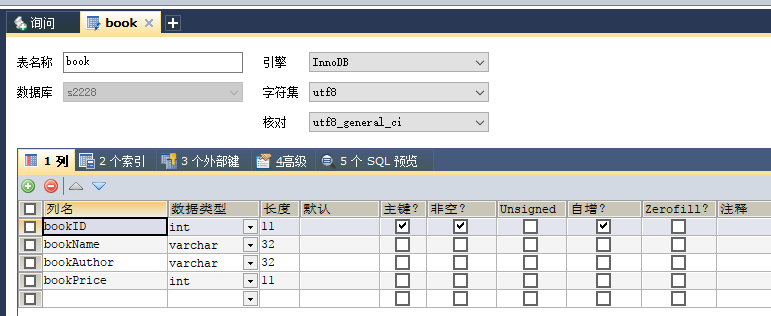Netty In Action中文版 - 第十章:单元测试代码
Netty In Action中文版 - 第十章:单元测试代码
本章介绍
- 单元测试
- EmbeddedChannel
学会了使用一个或多个ChannelHandler处理接收/发送数据消息,但是如何测试它们呢?Netty提供了2个额外的类使得测试ChannelHandler变得很容易,本章讲解如何测试Netty程序。测试使用JUnit4,如果不会用可以慢慢了解。JUnit4很简单,但是功能很强大。本章将重点讲解测试已实现的ChannelHandler和编解码器。
10.1 General
- writeInbound(Object...),写一个消息到入站通道
- writeOutbound(Object...),写消息到出站通道
- readInbound(),从EmbeddedChannel读取入站消息,可能返回null
- readOutbound(),从EmbeddedChannel读取出站消息,可能返回null
- finish(),标示EmbeddedChannel已结束,任何写数据都会失败
为了更清楚的了解其处理过程,看下图:

10.2 测试ChannelHandler
10.2.1 测试处理入站消息的handler

- package netty.in.action;
- import java.util.List;
- import io.netty.buffer.ByteBuf;
- import io.netty.channel.ChannelHandlerContext;
- import io.netty.handler.codec.ByteToMessageDecoder;
- public class FixedLengthFrameDecoder extends ByteToMessageDecoder {
- private final int frameLength;
- public FixedLengthFrameDecoder(int frameLength) {
- if (frameLength <= 0) {
- throw new IllegalArgumentException(
- "frameLength must be a positive integer: " + frameLength);
- }
- this.frameLength = frameLength;
- }
- @Override
- protected void decode(ChannelHandlerContext ctx, ByteBuf in,
- List<Object> out) throws Exception {
- while (in.readableBytes() >= frameLength) {
- ByteBuf buf = in.readBytes(frameLength);
- out.add(buf);
- }
- }
- }
解码器的实现完成了,写一个单元测试的方法是个好主意。即使代码看起来没啥问题,但是也应该进行单元测试,这样能在部署到生产之前就发现问题。现在让我们来看看如何使用EmbeddedChannel来完成测试,看下面代码:
- package netty.in.action;
- import io.netty.buffer.ByteBuf;
- import io.netty.buffer.Unpooled;
- import io.netty.channel.embedded.EmbeddedChannel;
- import org.junit.Assert;
- import org.junit.Test;
- public class FixedLengthFrameDecoderTest {
- @Test
- public void testFramesDecoded() {
- ByteBuf buf = Unpooled.buffer();
- for (int i = 0; i < 9; i++) {
- buf.writeByte(i);
- }
- ByteBuf input = buf.duplicate();
- EmbeddedChannel channel = new EmbeddedChannel(
- new FixedLengthFrameDecoder(3));
- // write bytes
- Assert.assertTrue(channel.writeInbound(input));
- Assert.assertTrue(channel.finish());
- // read message
- Assert.assertEquals(buf.readBytes(3), channel.readInbound());
- Assert.assertEquals(buf.readBytes(3), channel.readInbound());
- Assert.assertEquals(buf.readBytes(3), channel.readInbound());
- Assert.assertNull(channel.readInbound());
- }
- @Test
- public void testFramesDecoded2() {
- ByteBuf buf = Unpooled.buffer();
- for (int i = 0; i < 9; i++) {
- buf.writeByte(i);
- }
- ByteBuf input = buf.duplicate();
- EmbeddedChannel channel = new EmbeddedChannel(
- new FixedLengthFrameDecoder(3));
- Assert.assertFalse(channel.writeInbound(input.readBytes(2)));
- Assert.assertTrue(channel.writeInbound(input.readBytes(7)));
- Assert.assertTrue(channel.finish());
- Assert.assertEquals(buf.readBytes(3), channel.readInbound());
- Assert.assertEquals(buf.readBytes(3), channel.readInbound());
- Assert.assertEquals(buf.readBytes(3), channel.readInbound());
- Assert.assertNull(channel.readInbound());
- }
- }
如上面代码,testFramesDecoded()方法想测试一个ByteBuf,这个ByteBuf包含9个可读字节,被解码成包含了3个可读字节的ByteBuf。你可能注意到,它写入9字节到通道是通过调用writeInbound()方法,之后再执行finish()来将EmbeddedChannel标记为已完成,最后调用readInbound()方法来获取EmbeddedChannel中的数据,直到没有可读字节。testFramesDecoded2()方法采取同样的方式,但有一个区别就是入站ByteBuf分两步写的,当调用writeInbound(input.readBytes(2))后返回false时,FixedLengthFrameDecoder值会产生输出,至少有3个字节是可读,testFramesDecoded2()测试的工作相当于testFramesDecoded()。
10.2.2 测试处理出站消息的handler
- 将已接收的数据flush()后将从ByteBuf读取所有整数并调用Math.abs(...)
- 完成后将字节写入ChannelPipeline中下一个ChannelHandler的ByteBuf中
看下图处理过程:

- package netty.in.action;
- import java.util.List;
- import io.netty.buffer.ByteBuf;
- import io.netty.channel.ChannelHandlerContext;
- import io.netty.handler.codec.MessageToMessageEncoder;
- public class AbsIntegerEncoder extends MessageToMessageEncoder<ByteBuf> {
- @Override
- protected void encode(ChannelHandlerContext ctx, ByteBuf msg,
- List<Object> out) throws Exception {
- while(msg.readableBytes() >= 4){
- int value = Math.abs(msg.readInt());
- out.add(value);
- }
- }
- }
下面代码是测试AbsIntegerEncoder:
- package netty.in.action;
- import io.netty.buffer.ByteBuf;
- import io.netty.buffer.Unpooled;
- import io.netty.channel.embedded.EmbeddedChannel;
- import org.junit.Assert;
- import org.junit.Test;
- public class AbsIntegerEncoderTest {
- @Test
- public void testEncoded() {
- //创建一个能容纳10个int的ByteBuf
- ByteBuf buf = Unpooled.buffer();
- for (int i = 1; i < 10; i++) {
- buf.writeInt(i * -1);
- }
- //创建EmbeddedChannel对象
- EmbeddedChannel channel = new EmbeddedChannel(new AbsIntegerEncoder());
- //将buf数据写入出站EmbeddedChannel
- Assert.assertTrue(channel.writeOutbound(buf));
- //标示EmbeddedChannel完成
- Assert.assertTrue(channel.finish());
- //读取出站数据
- ByteBuf output = (ByteBuf) channel.readOutbound();
- for (int i = 1; i < 10; i++) {
- Assert.assertEquals(i, output.readInt());
- }
- Assert.assertFalse(output.isReadable());
- Assert.assertNull(channel.readOutbound());
- }
- }
10.3 测试异常处理
有时候传输的入站或出站数据不够,通常这种情况也需要处理,例如抛出一个异常。这可能是你错误的输入或处理大的资源或其他的异常导致。我们来写一个实现,如果输入字节超出限制长度就抛出TooLongFrameException,这样的功能一般用来防止资源耗尽。看下图:

- package netty.in.action;
- import java.util.List;
- import io.netty.buffer.ByteBuf;
- import io.netty.channel.ChannelHandlerContext;
- import io.netty.handler.codec.ByteToMessageDecoder;
- import io.netty.handler.codec.TooLongFrameException;
- public class FrameChunkDecoder extends ByteToMessageDecoder {
- // 限制大小
- private final int maxFrameSize;
- public FrameChunkDecoder(int maxFrameSize) {
- this.maxFrameSize = maxFrameSize;
- }
- @Override
- protected void decode(ChannelHandlerContext ctx, ByteBuf in,
- List<Object> out) throws Exception {
- // 获取可读字节数
- int readableBytes = in.readableBytes();
- // 若可读字节数大于限制值,清空字节并抛出异常
- if (readableBytes > maxFrameSize) {
- in.clear();
- throw new TooLongFrameException();
- }
- // 读取ByteBuf并放到List中
- ByteBuf buf = in.readBytes(readableBytes);
- out.add(buf);
- }
- }
测试FrameChunkDecoder的代码如下:
- package netty.in.action;
- import io.netty.buffer.ByteBuf;
- import io.netty.buffer.Unpooled;
- import io.netty.channel.embedded.EmbeddedChannel;
- import io.netty.handler.codec.TooLongFrameException;
- import org.junit.Assert;
- import org.junit.Test;
- public class FrameChunkDecoderTest {
- @Test
- public void testFramesDecoded() {
- //创建ByteBuf并填充9字节数据
- ByteBuf buf = Unpooled.buffer();
- for (int i = 0; i < 9; i++) {
- buf.writeByte(i);
- }
- //复制一个ByteBuf
- ByteBuf input = buf.duplicate();
- //创建EmbeddedChannel
- EmbeddedChannel channel = new EmbeddedChannel(new FrameChunkDecoder(3));
- //读取2个字节写入入站通道
- Assert.assertTrue(channel.writeInbound(input.readBytes(2)));
- try {
- //读取4个字节写入入站通道
- channel.writeInbound(input.readBytes(4));
- Assert.fail();
- } catch (TooLongFrameException e) {
- }
- //读取3个字节写入入站通道
- Assert.assertTrue(channel.writeInbound(input.readBytes(3)));
- //标识完成
- Assert.assertTrue(channel.finish());
- //从EmbeddedChannel入去入站数据
- Assert.assertEquals(buf.readBytes(2), channel.readInbound());
- Assert.assertEquals(buf.skipBytes(4).readBytes(3),
- channel.readInbound());
- }
- }
10.4 Summary
In this chapter you learned how you are be able to test your custom ChannelHandler and so make sure it works like you expected. Using the shown techniques you are now be able to make use of JUnit and so ultimately test your code as your are used to. Using the techniques shown in the chapter you will be able to guarantee a high quality of your code and also guard it from misbehavior.. In the next chapters we will focus on writing "real" applications on top of Netty and so show you how you can make real use of it. Even if the applications don't contain any test-code remember it is quite important to do so when you will write your next-gen application.







